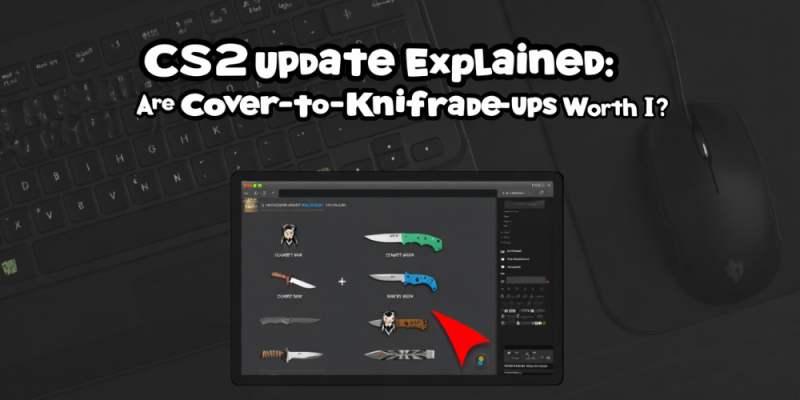CS2 Update Explained: Are Covert-to-Knife Trade-Ups Worth It?
2025-10-28

If the latest CS2 patch had you eyeing covert-to-knife trade-ups, you’re not alone. Hype posts and cropped screenshots hint at quick profit, but the truth lives in the contract math. I’ll unpack what actually changed, what stayed the same, and whether staking costly red skins stacks up in a market that’s shifting by the hour.
Trade-ups use 10 items of the same rarity to yield one item of the next tier from the input collections only. Knives and gloves are rare special drops tied to cases, not contract outcomes. Any UI tease or viral clip suggesting reds can convert into a blade is noise. If you feed 10 covert skins, you’ll only roll the next collection grade, never a rare special.
Profit lives or dies on expected value: sum of outcome prices times their collection weights minus your buy‑in and fees. Inputs weight outputs by share, float caps gate top conditions, and StatTrak costs can swamp returns. Post‑patch, red prices spiked on speculation, slicing margins further. One miss and you’re anchoring a pricey brick in your inventory.
Safer angles exist. Target lower tiers where supply is sane: Industrial to Mil‑Spec or Mil‑Spec to Restricted within tight collections. Aim for few possible outputs, verify float pools to hit better wear, and model EV with live prices. Avoid StatTrak unless math favors it, and spread attempts instead of overcommitting to a single expensive contract.
Conclusion
Bottom line: skip covert‑to‑knife fantasies and stick to contracts you can price with confidence. Research collections, float ceilings, and demand cycles, and time sales around updates. If you chase heat, set strict budgets and exit plans. Smart discipline beats hype, and in CS2 trading, that’s how you protect bankroll while still finding wins.




